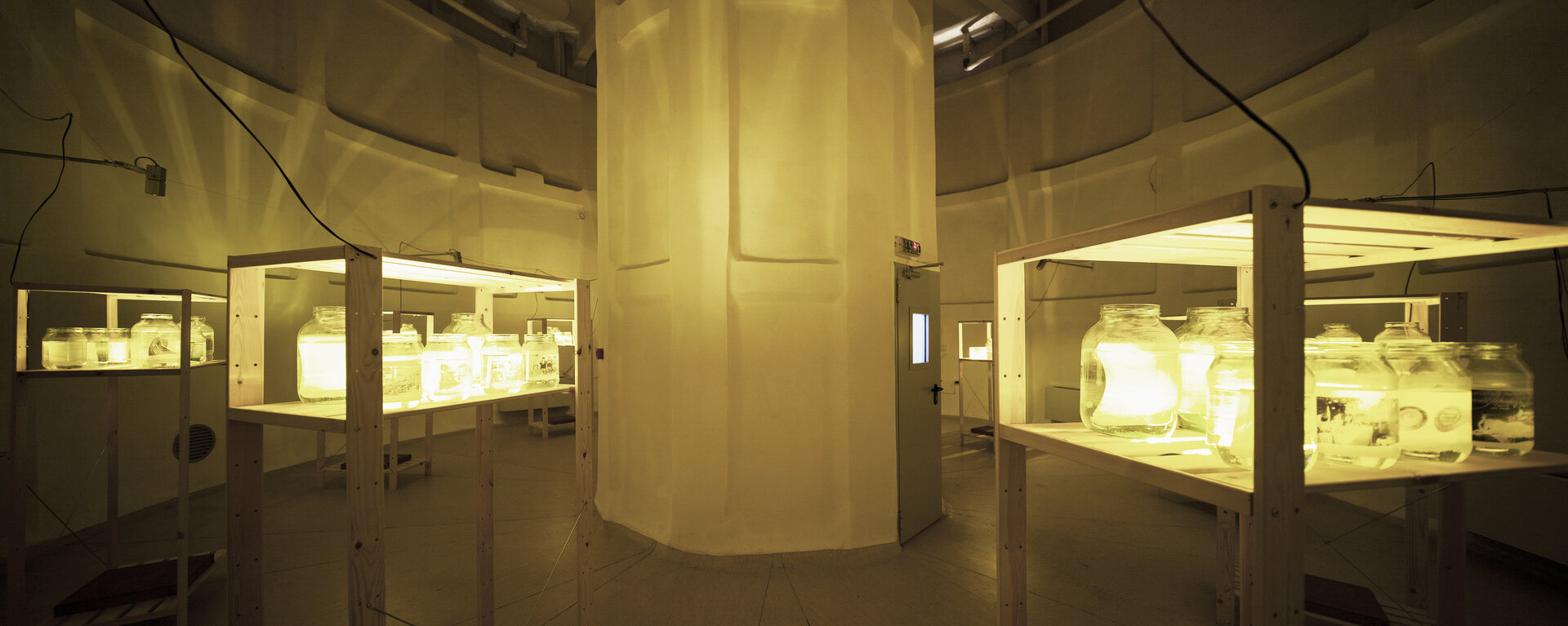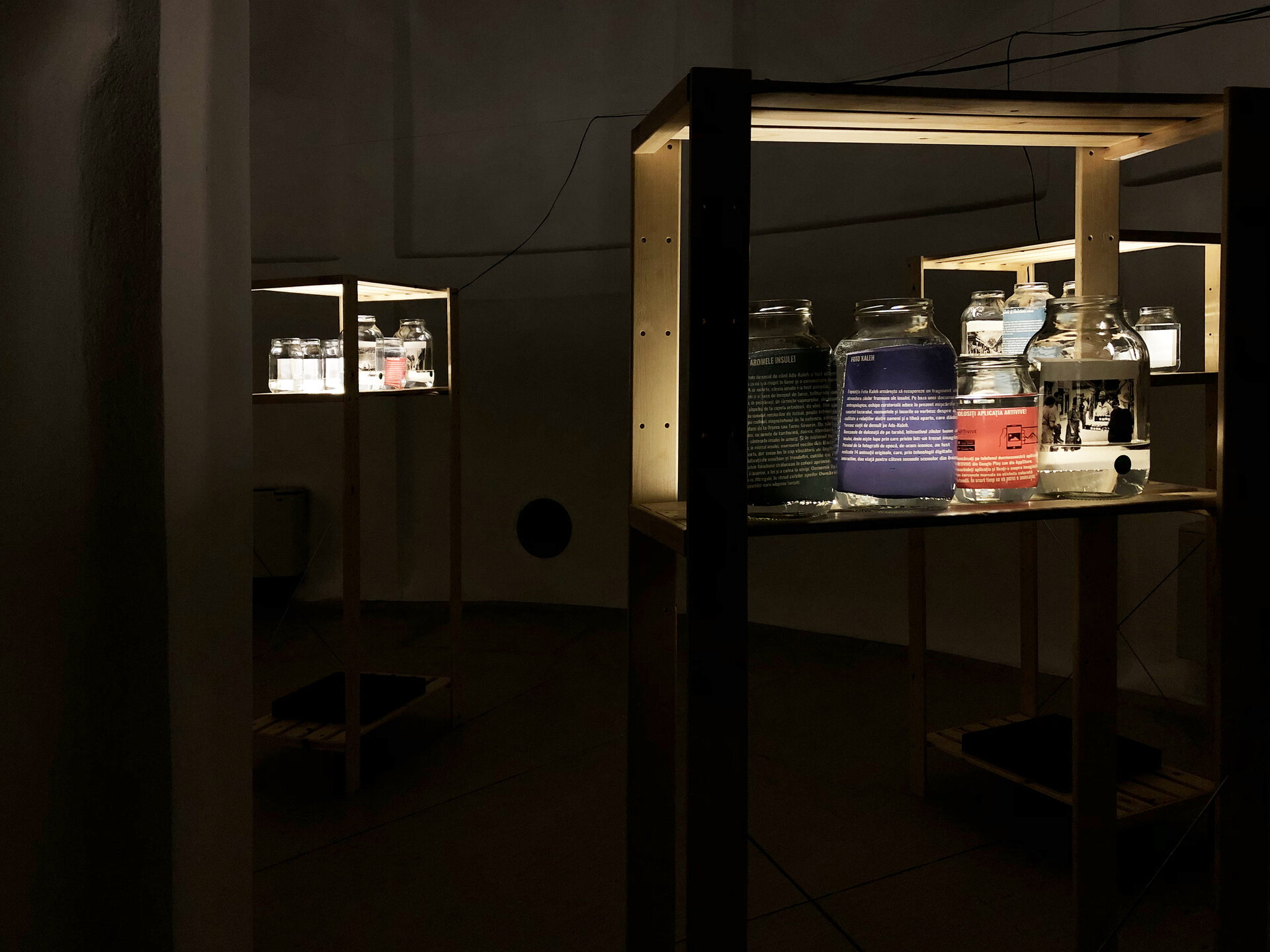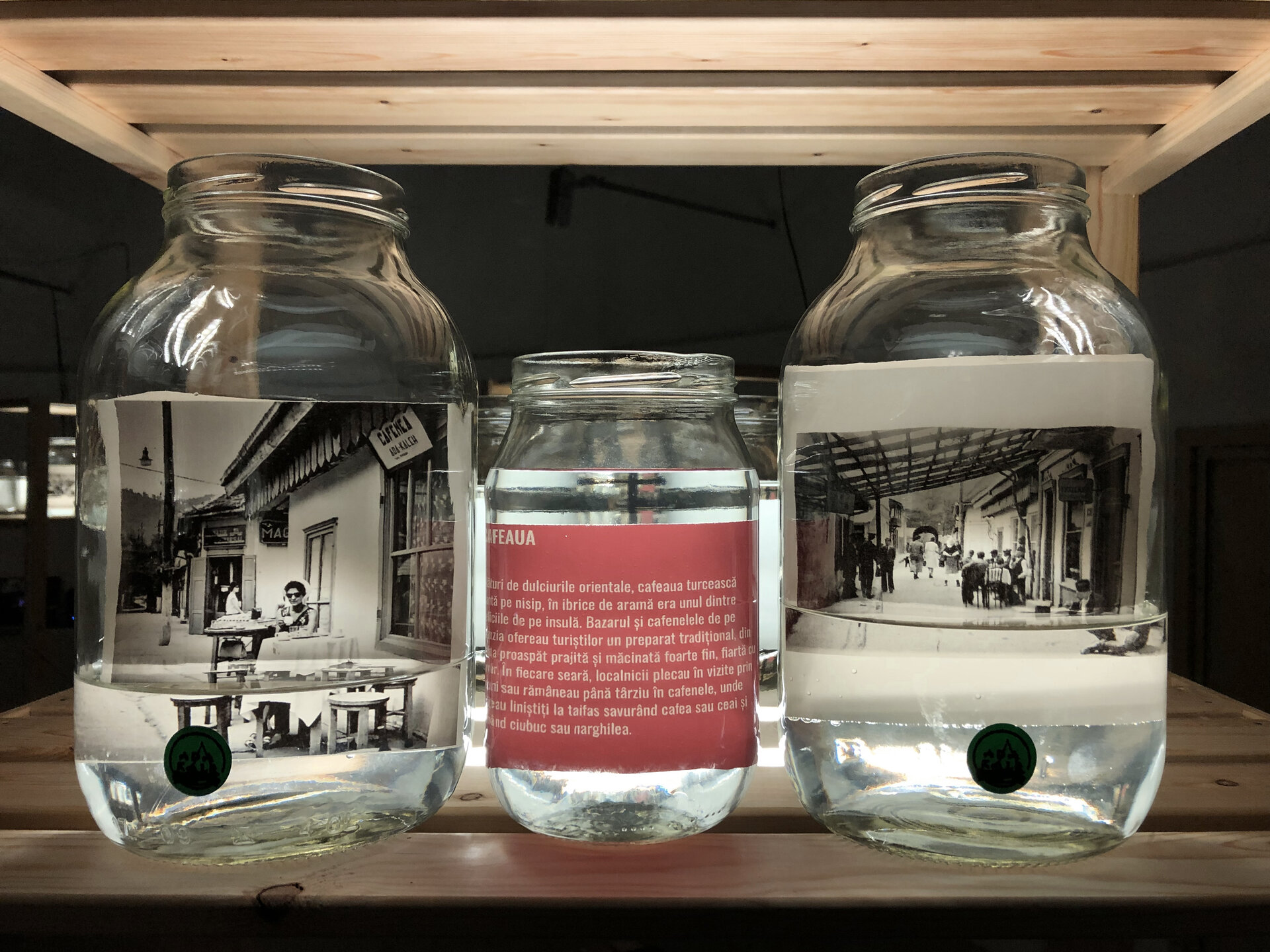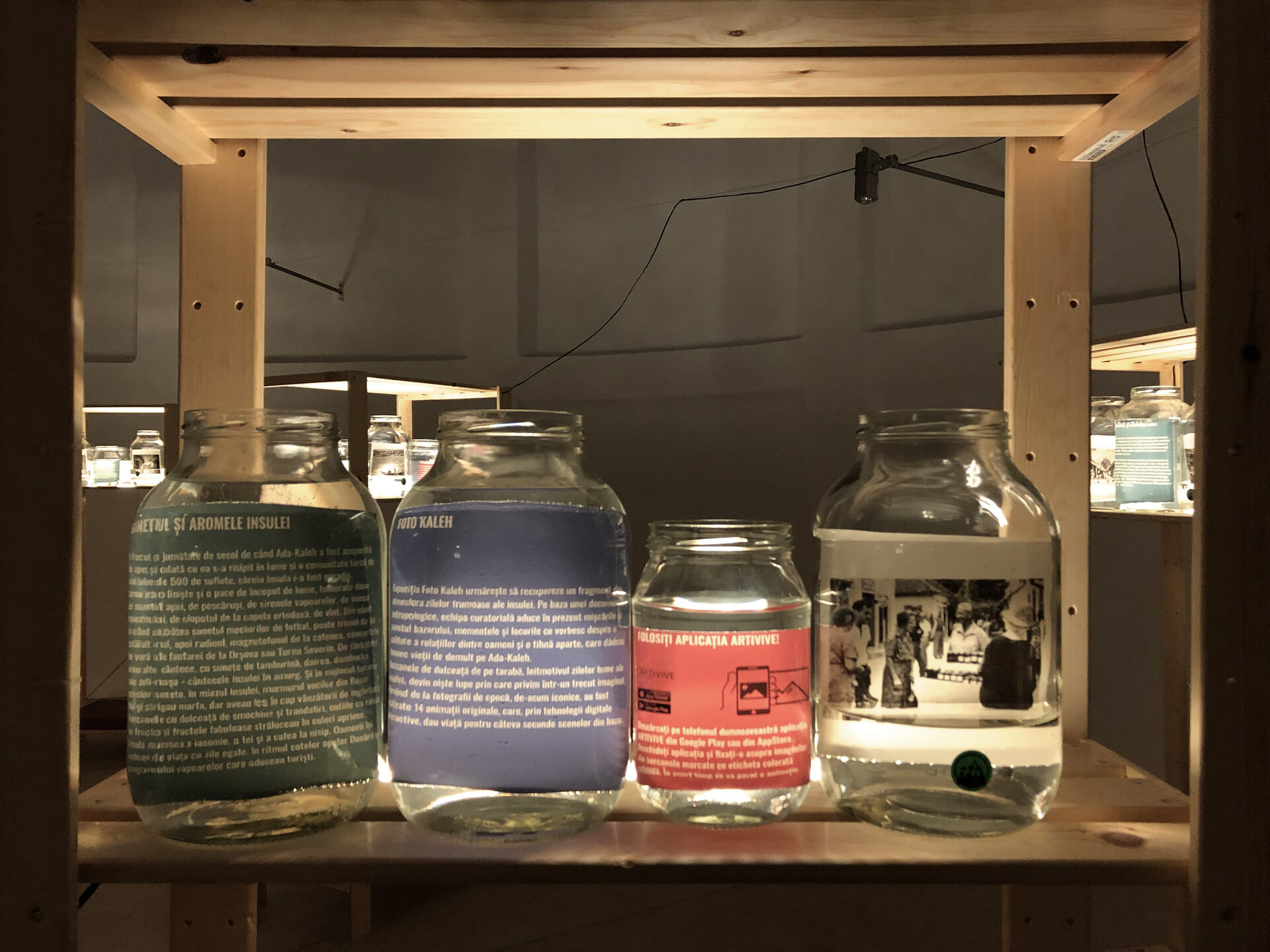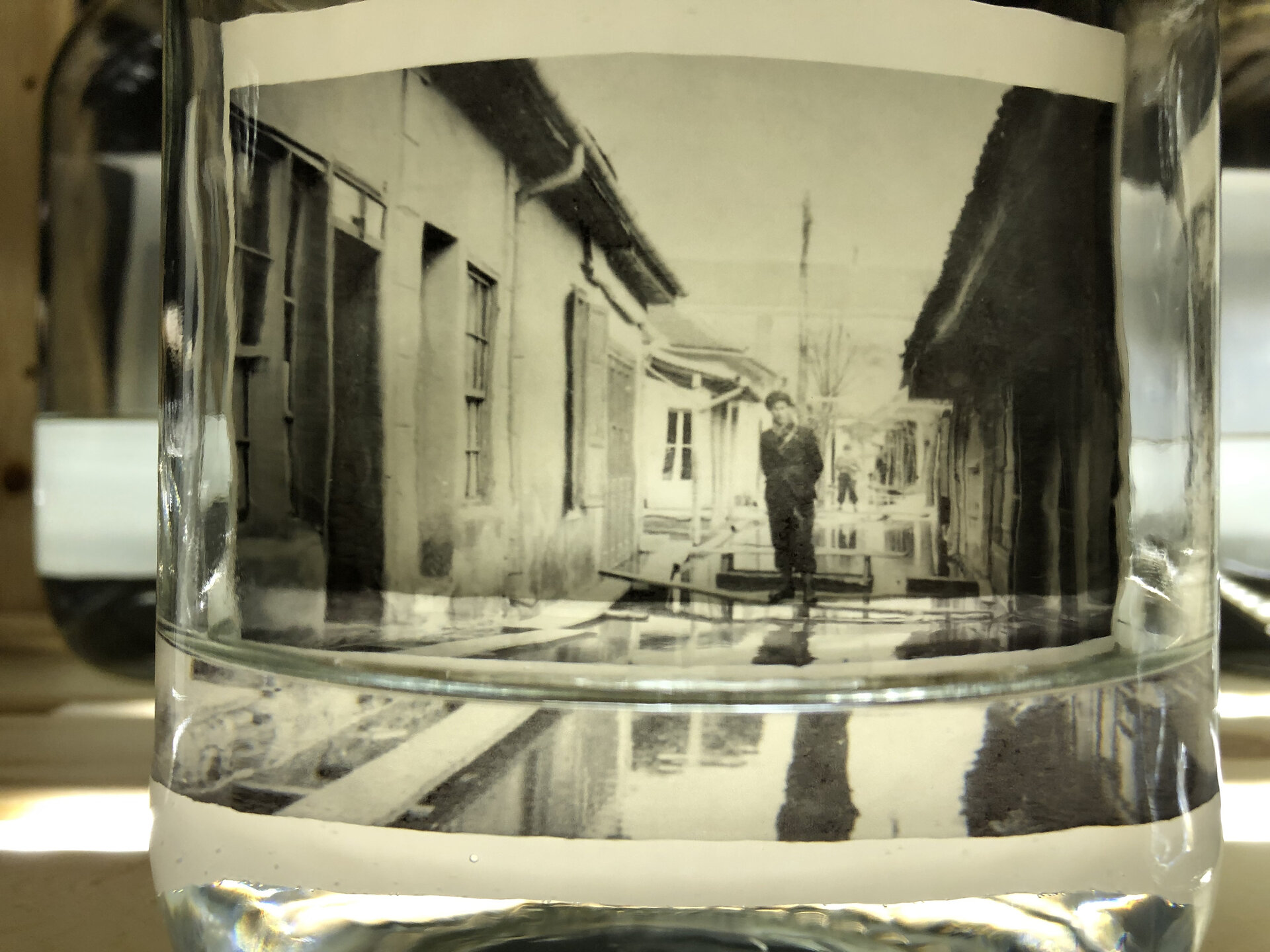
FotoKaleh
Authors’ Comment
The FotoKaleh exhibition aims to recover a fragment of the delightful atmosphere in the Ada-Kaleh island's heyday. Based on anthropological documentation, the curatorial team brings into the present the atmosphere of the island's bazaar, with its characters, colours and specific sound, which used to provide charm to the island's life of old.
One of the photos discovered in this research is of a group of people around the jam stalls. This photo became the exhibition's leitmotiv, revolving around this topic, of fruit and jams, of the flavour bazaar visits always had. This photo is placed right in the project's introductory part, and suggests a reading key for the entire design, constructed on pantry racks holding many jars of various sizes. Instead of the actual jam, flavours and fragrances of a nostalgic look to the past have been suggested.
The jam jars on the stalls sank in the water, along with the images we carry within ourselves about this history, water which fed the island, and which then concealed it.
Starting from the already iconic vintage photos, 15 interactive digital animations bring the scenes in the bazaar to life, for a few seconds, based on augmented reality.
A complex technology was used to create the animations. 3D characters were reconstructed using photos, observing clothing details. Movements were charted and recomposed by connecting the 3D models to actual human bodies, through sensors. They became film scenes, following fictional scenarios. The photos in the jars served as the triggers for these animations. By using the Artivive app, any of the Castle's visitors could see, on their own phone, how the photos in the jars would turn into animated scenes.
There are many such water castles built in most of the country's cities. They represented a historical moment, and now they are just right to be converted into community spaces. The approach to these conversions must surely be performed by taking into account the specific culture and conditions for each particular place. These initiatives should soon be put together and linked in a network of activities, to cultural programs in a near future.
Related projects:
- Women ‘Enemies of the People’
- EXPO_01_BUC_ARH_SP.PUBLIC. Selection from Mihai Oroveanu image collection
- The Romanian Museum of Collectivization. Ioachim’s house
- METAKITCHEN
- RDW Design House
- DIPLOMA 2020 LIVING ROOM
- #TOGETHER
- DIPLOMA 2020 IMUAU
- Astra VR
- Exhibition Design “Shaping Design. Together” MNAR
- Once Upon a Time in Cotroceni
- City and Water
- FotoKaleh
- BIOS – An Interactive Art Exhibition about the Anthropocene
